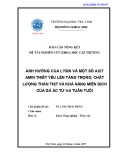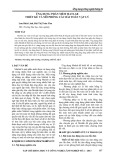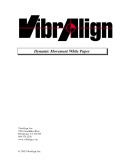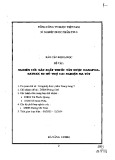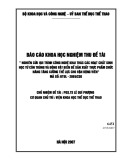
Original article
A comparison between Poisson
and zero-inflated Poisson regression models
with an application to number of black spots
in Corriedale sheep
Hugo NAYA
1,2,3*
, Jorge I. URIOSTE
2
, Yu-Mei CHANG
3
,
Mariana RODRIGUES-MOTTA
3
, Roberto KREMER
4
, Daniel GIANOLA
3
1
Unidad de Bioinforma´tica, Institut Pasteur de Montevideo, Mataojo 2020,
Montevideo 11400, Uruguay
2
Departamento de Produccio´n Animal y Pasturas, Facultad de Agronomı´a, Av. Garzo´n 780,
Montevideo 12900, Uruguay
3
Department of Animal Sciences, University of Wisconsin-Madison, Madison,
WI 53706, USA
4
Departamento de Ovinos y Lanas, Facultad de Veterinaria, Av. Lasplaces 1550,
Montevideo 11600, Uruguay
(Received 15 October 2007; accepted 16 January 2008)
Abstract – Dark spots in the fleece area are often associated with dark fibres in wool,
which limits its competitiveness with other textile fibres. Field data from a sheep
experiment in Uruguay revealed an excess number of zeros for dark spots. We compared
the performance of four Poisson and zero-inflated Poisson (ZIP) models under four
simulation scenarios. All models performed reasonably well under the same scenario for
which the data were simulated. The deviance information criterion favoured a Poisson
model with residual, while the ZIP model with a residual gave estimates closer to their
true values under all simulation scenarios. Both Poisson and ZIP models with an error
term at the regression level performed better than their counterparts without such an
error. Field data from Corriedale sheep were analysed with Poisson and ZIP models with
residuals. Parameter estimates were similar for both models. Although the posterior
distribution of the sire variance was skewed due to a small number of rams in the dataset,
the median of this variance suggested a scope for genetic selection. The main
environmental factor was the age of the sheep at shearing. In summary, age related
processes seem to drive the number of dark spots in this breed of sheep.
zero-inflated Poisson / sheep / spot / posterior predictive ability / Bayesian hierarchical
model
*
Corresponding author: naya@pasteur.edu.uy
Genet. Sel. Evol. 40 (2008) 379–394
INRA, EDP Sciences, 2008
DOI: 10.1051/gse:2008010
Available online at:
www.gse-journal.org
Article published by EDP Sciences





